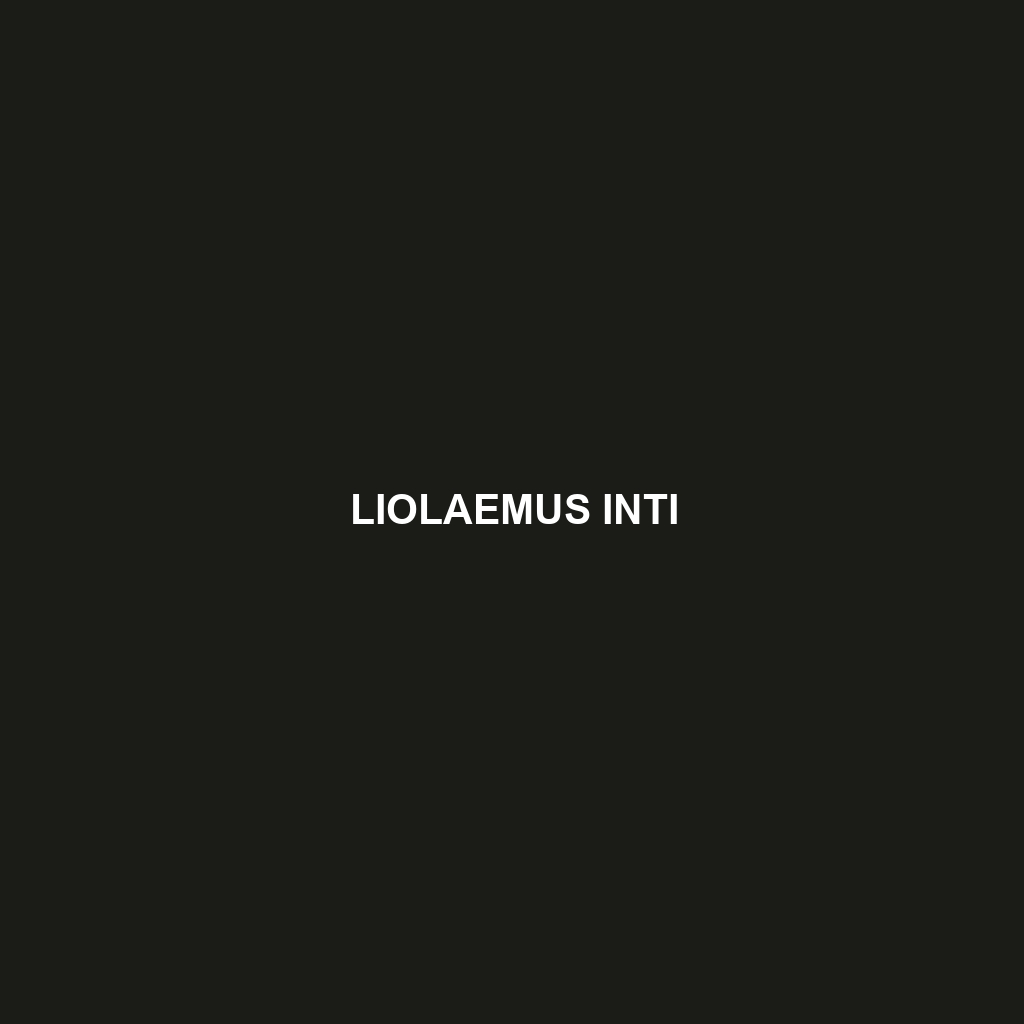-

Liolaemus inti
Discover the Liolaemus inti, or Inti lizard, a vibrant, omnivorous reptile native to the temperate forests and savannas of the Andean regions in Peru and Bolivia. These diurnal lizards, measuring 6 to 12 inches, play a vital role in their ecosystem by controlling insect populations and serving as prey to larger predators.
-

Liolaemus insolitus
Liolaemus insolitus is a unique lizard native to the arid regions of South America, primarily inhabiting rocky outcrops in the Andean and Patagonian areas of Argentina and Chile. This slender, diurnal insectivore exhibits remarkable camouflage abilities and plays a vital role in controlling insect populations within its ecosystem.
-

Liolaemus incaicus
Discover the intriguing Liolaemus incaicus, a slender lizard native to the temperate forests and montane ecosystems of the Andes, characterized by its vibrant coloration and ability to adapt to rocky terrains. Known for its insectivorous diet and unique viviparous reproduction, this species plays a crucial role in maintaining ecological balance within its habitat.
-

Liolaemus hermannunezi
Liolaemus hermannunezi is a striking lizard native to the rocky outcrops of the Andes Mountains in Argentina, characterized by its elongated body, earthy coloration, and social behaviors during the breeding season. As an insectivore that plays a vital role in its ecosystem, this vulnerable species faces threats from habitat destruction and climate change.
-

Liolaemus huacahuasicus
Discover the remarkable Liolaemus huacahuasicus, a high-altitude lizard from the Andes, known for its striking earthy coloration, agility in rocky terrains, and adaptability to cold climates. This insectivorous species plays a crucial ecological role by controlling insect populations and contributing to nutrient cycling in its habitat.
-

Liolaemus hatcheri
Discover the Liolaemus hatcheri, a vulnerable lizard native to the temperate forests of southern Chile, known for its cryptic brown and grey coloration, diurnal behavior, and diet primarily consisting of insects. This fascinating species plays a crucial role in its ecosystem by controlling insect populations and serving as prey for local predators.
-

Liolaemus halonastes
Discover the captivating Liolaemus halonastes, a distinctive lizard species from southern Argentina and Chile, known for its striking coloration and adaptability in temperate forests and shrublands. This insectivore plays a vital role in its ecosystem, controlling insect populations while exhibiting fascinating social behaviors and reproductive traits.
-

Liolaemus gununakuna
Discover the Liolaemus gununakuna, commonly known as the Gununakuna lizard, a vibrant insectivore native to the temperate forests, savannas, and rocky outcrops of Chile and Argentina, noted for its striking colors and adaptability in diverse habitats. With a length of 15 to 20 centimeters, this lizard plays a crucial role in controlling insect populations while…
Search
Popular Posts
-
Lygosoma corpulentum
Discover the Lygosoma corpulentum, or fat skink, a robust insectivorous lizard native to Southeast Asia’s moist tropical rainforests and varying habitats. With a stocky body, impressive camouflage, and remarkable adaptability, this ovoviviparous species plays a crucial role in maintaining ecological balance.
-
Lygosoma boehmei
Lygosoma boehmei is a slender, nocturnal insectivore found in humid tropical rainforests and savannas of Southeast Asia, exhibiting a smooth, camouflaging texture and remarkable burrowing abilities. This vulnerable species plays a crucial role in its ecosystem by controlling insect populations and serving as prey for larger predators.
-
Lygosoma bampfyldei
Lygosoma bampfyldei, commonly found in tropical and subtropical regions, is a moderately sized lizard measuring 15 to 25 cm, known for its elongated body and glossy, camouflage coloration. This insectivorous species thrives in moist habitats and plays a vital role in maintaining ecological balance by controlling insect populations.
Categories
Tags
animal adaptations (924) animal behavior (5000) animal reproduction (865) behavior (920) biodiversity (7853) conservation (1670) conservation efforts (1778) conservation status (5748) diet (2104) ecological balance (2087) ecological role (1952) ecosystem (1469) ecosystem role (2901) endangered species (2514) habitat (3280) habitat conservation (1136) Habitat Destruction (1421) habitat loss (3385) herpetology (870) insectivorous reptiles (948) IUCN Red List (1971) lizard behavior (881) lizard diet (944) lizard reproduction (1101) nocturnal animals (2754) nocturnal behavior (2592) nocturnal reptiles (1061) physical characteristics (2058) predator-prey relationships (927) reproduction (2890) reptile behavior (1037) reptile conservation (1348) reptile reproduction (1069) rodent species (1325) seed dispersal (2145) Seed Disperser (979) small mammals (1168) snake behavior (952) snake diet (1061) snake reproduction (1129) tropical forests (948) Vulnerable Species (4926) wildlife (2511) wildlife conservation (5355) wildlife protection (1008)




